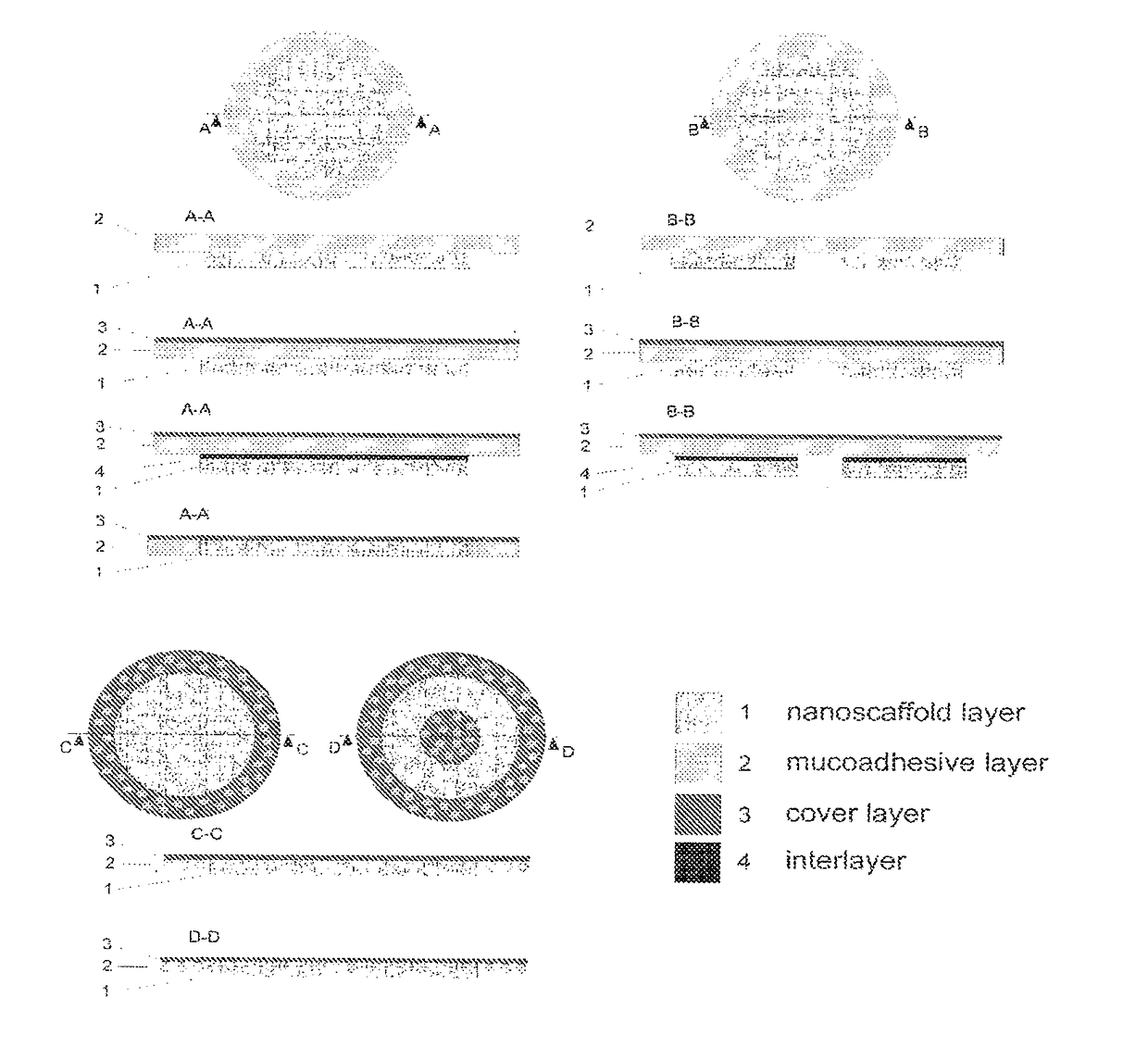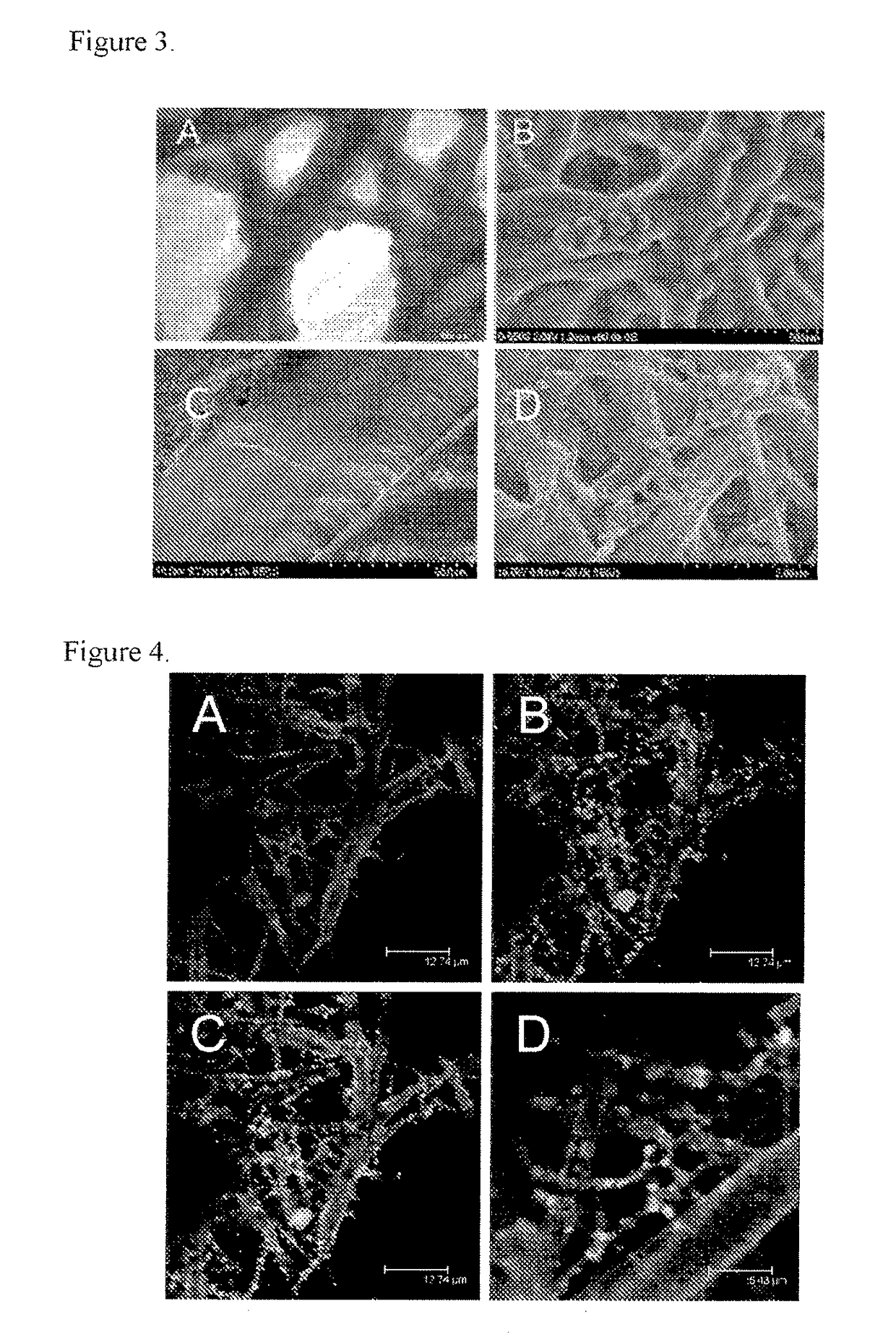Mucoadhesive carriers of particles, method of preparation and uses thereof
- Summary
- Abstract
- Description
- Claims
- Application Information
AI Technical Summary
Benefits of technology
Problems solved by technology
Method used
Image
Examples
example 1
Preparation of a Mucoadhesive Nanofibrous Carrier of Particles
[0081]The mucoadhesive nanofibrous carrier for administration of particles to a mucosal surface consists of several layers. The mucoadhesive layer 2 is a layer that provides adhesion of the whole system to the mucosa and consists of a film of different thickness prepared from substances with mucoadhesive properties or their mixtures. Typically, this layer, from the side intended for the orientation into the oral cavity, is covered with a cover layer 3 which is either slowly soluble, or insoluble in the environment of the oral cavity and has no adhesive properties. It is formed by some film-forming substances used in pharmacy. A film-forming agent is deposited to the mucoadhesive layer as a spray containing the polymer solution and appropriate other substances (e.g. softeners). The nanofibrous layer 1 serves as a reservoir of nanoparticles where the nanoparticles are placed in the space among nanofibres and / or on the surfa...
example 2
Method of the Mucoadhesive Carrier Administration Onto the Mucosa
[0097]A mucoadhesive nanofiber carrier of particles is administered onto the oral mucosa, particularly sublingual and buccal which is not keratinized in humans. The nanofiber mucoadhesive carrier is placed on a finger with the non-adhesive side against the finger and by a slight pressure is applied to the target site in the oral cavity, for example to the underside of the tongue (sublingual mucosa) or to the buccal mucosa, for approximately 5 seconds, before adhesion is created between the mucoadhesive side of the system and the mucosa. Alternatively, a suitable applicator can be used. The applicator is particularly advantageous in veterinary medicine. It was verified that 3 hours after the administration, the tongue movements during speaking or ingesting food did not affect the adhesive properties of the carrier (FIG. 21).
example 3
Ex-Vivo Administration of the Mucoadhesive Carrier on the Mucosa
[0098]Porcine sublingual mucosa is a model of qualities that are very close to humans. After the removal from a freshly killed animal, sublingual mucosa and buccal mucosa were washed with saline and were used immediately for the administration of nanoparticles using a carrier. Firstly, the nanofiber layer of the carrier was saturated with a solution of liposomes or nanoparticles prepared from the mixture of PLGA and PLGA-PEG polymers with a concentration of 20 mg / ml. Further, the carrier with liposomes or nanoparticles was placed on a finger with the non-adhesive side against the finger and exerting a slight pressure for about 5 seconds it was applied to the target site. In order to study the penetration of liposomes and PLGA nanoparticles into the tissue, the system administered to the mucosa was incubated in a moist chamber at 37° C. for 4 hours. Mucosal surface was kept moistened with saline to simulate saliva produc...
PUM
| Property | Measurement | Unit |
|---|---|---|
| Length | aaaaa | aaaaa |
| Length | aaaaa | aaaaa |
| Fraction | aaaaa | aaaaa |
Abstract
Description
Claims
Application Information
 Login to View More
Login to View More - R&D
- Intellectual Property
- Life Sciences
- Materials
- Tech Scout
- Unparalleled Data Quality
- Higher Quality Content
- 60% Fewer Hallucinations
Browse by: Latest US Patents, China's latest patents, Technical Efficacy Thesaurus, Application Domain, Technology Topic, Popular Technical Reports.
© 2025 PatSnap. All rights reserved.Legal|Privacy policy|Modern Slavery Act Transparency Statement|Sitemap|About US| Contact US: help@patsnap.com



